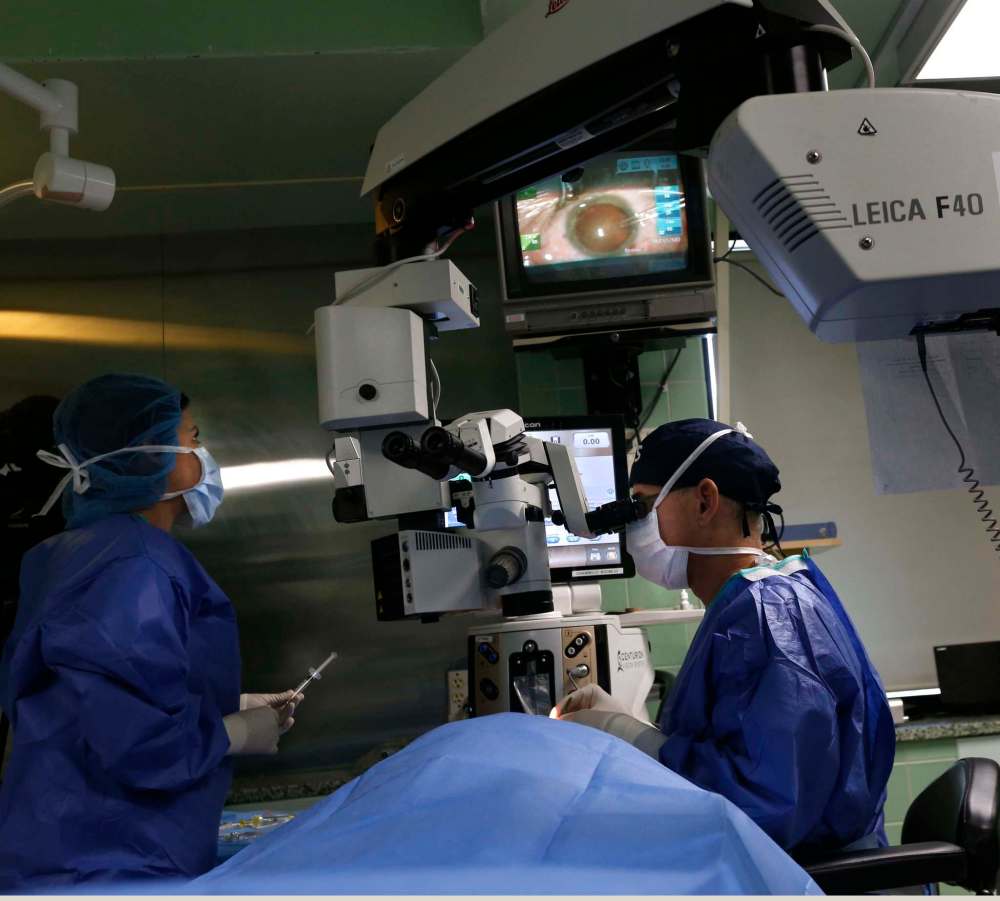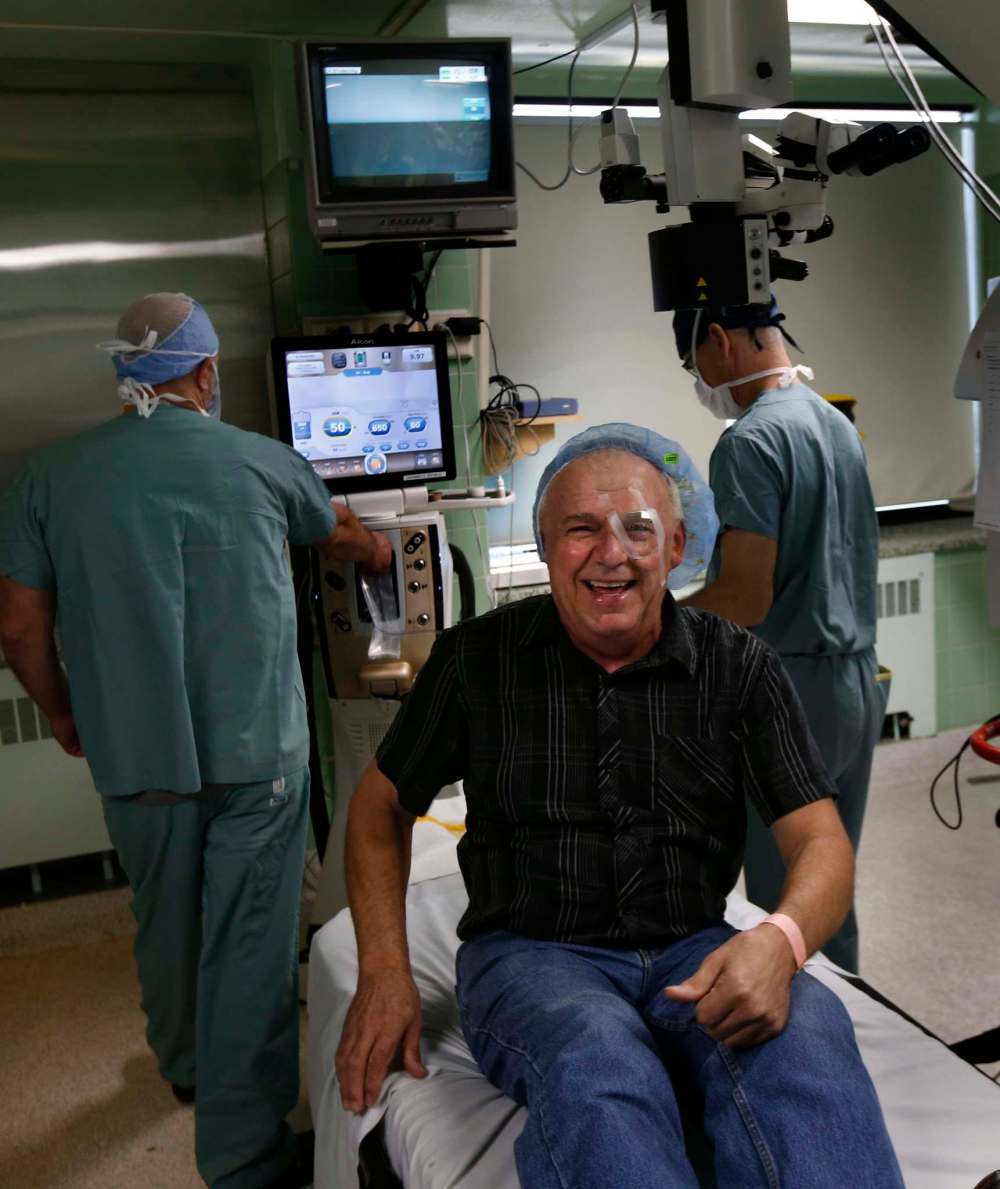No-sedation cataract surgery addresses long wait list, anesthesiologist shortage
Advertisement
Read this article for free:
or
Already have an account? Log in here »
To continue reading, please subscribe:
Monthly Digital Subscription
$19 $0 for the first 4 weeks*
- Enjoy unlimited reading on winnipegfreepress.com
- Read the E-Edition, our digital replica newspaper
- Access News Break, our award-winning app
- Play interactive puzzles
*No charge for 4 weeks then billed as $19 every four weeks (new subscribers and qualified returning subscribers only). Cancel anytime.
Read unlimited articles for free today:
or
Already have an account? Log in here »
Hey there, time traveller!
This article was published 16/10/2017 (2374 days ago), so information in it may no longer be current.
Twelve minutes after he walked into the operating room at Misericordia Health Centre, Grant Kolodie walked out with perfect vision.
“It’s absolutely immediate how it works,” he said, recuperating in a hospital lounge with a cup of orange juice and cookies. “I can read that sign there, I can see what time it is, I can see the clock down there, which I couldn’t do 20 minutes ago.”

Kolodie is one of nearly 200 eye patients at Misericordia to receive cataract surgery without sedation as part of a trial project the facility hopes will allow them to speed through the Winnipeg region’s burgeoning wait list.
By Dr. Mathen Mathen’s count, there are 8,500 people currently on the wait list for cataract surgery. When they’re seen hinges in part on anesthesiologists, said Mathen, who is the WRHA’s head of ophthalmology.
While sedated cataract surgery takes maybe five minutes longer than the non-sedated version Kolodie had, it requires an IV line, sedation medication and the presence of an anesthesiologist, which isn’t always easy to facilitate. In fact, surgeons in Brandon have been performing this type of non-sedation surgery for several years now as a result of an anesthesiologist shortage in the region.
For patients at a low risk for surgical problems, its cheaper and faster to give them freezing eye drops and perform the surgery while they’re awake.

It can, however, be a bit unnerving for the patient.
Kolodie’s first surgery for his right eye was just before Thanksgiving.
“For the first one, of course, you’re very apprehensive,” he said, “but once you go through the first surgery, the second one’s a cake-walk.”
The Free Press was in the room for Kolodie’s second surgery on Tuesday, watching first as he lay down on the bed and then watching the screen as the surgeon put the freezing drops in his eye and then made a small incision to suck out the cataracts.
Up close on screen, the operation looks alarmingly like someone is swirling a needle over and over through the eye, almost digging into it, but Kolodie is reassuring: “There’s no pain whatsoever.”

In fact, he said, you just see bright lights through the eye being operated on (the other is covered) and hear the music being played in the operating room. He remembers it being old-school rock the first time, music he likes. On Tuesday, The Beatles started to play just as he was settling onto the bed.
Minutes later, in recovery, Kolodie said the only lingering effect of the surgery was the slightly cloudy, clear protective covering over his eye. He’ll wear that overnight just once and then nothing. For a few weeks he has to take drops four times a day and steer clear of dust, but other than that his eye is fully functional.
The quick recovery time is another benefit of the trial project, Mathen said.
While most patients speak favourably about the experience, he noted that not all find it as painless as Kolodie.
“We’ve had varying reports,” he said. “We’ve… had patients complain that it’s more painful and they feel it more and it can be uncomfortable at times.”
The hospital has been doing 10-12 cases daily since the trial began in early August, while Mathen hopes to keep that going on a more permanent basis that remains to be seen. It’s unclearly exactly what the cost savings are, although certainly there are some.
The decision will come before the department at a meeting next week.
jane.gerster@freepress.mb.ca


